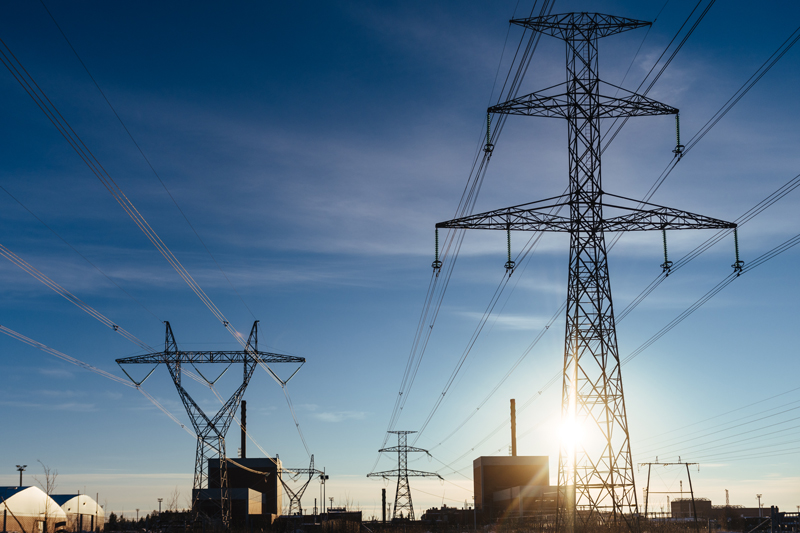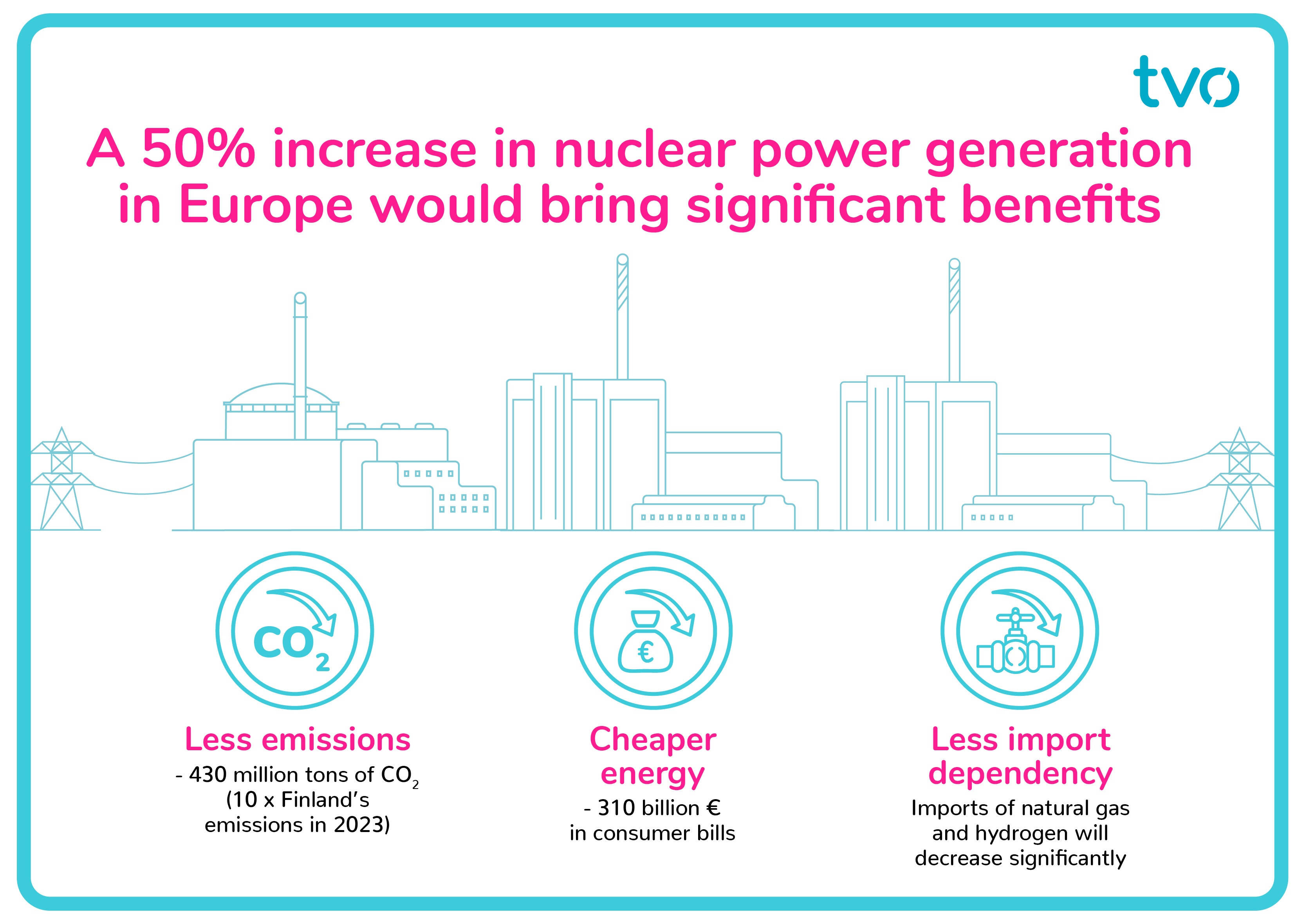Study by nucleareurope: Increasing nuclear capacity within EU area would result in faster cuts in emissions and lower electricity price
An increase in nuclear capacity in Europe would contribute to achieving faster cuts in emissions, reduce long-term energy costs as well as the need for gas and hydrogen imports, and improve the security of energy supplies. For consumers and industries, this development would translate into more affordable electricity and reliability of operation in the electrifying world.

These conclusions are presented in the report ”Pathways to 2050 – the role of nuclear in a low-carbon Europe” published by nucleareurope in 2024. In the study, three scenarios of the nuclear capacity within EU by the year 2050 are analysed. The modelling of the impacts of 100, 150 and 200 gigawatt nuclear capacities has utilised the most recent data provided by the European Network of Transmission System Operators for Electricity (ENTSO-E), the International Energy Agency (IEA), and the European Commission.
At present, it is estimated that the capacity of nuclear power plants in the EU area will be about one hundred gigawatts in 2050. The report presents calculations of the impacts that increasing the capacity to 150 or 200 gigawatts by 2050 would have. This would mean 31 or 63 nuclear new-builds of OL3 size.
For example, achieving a capacity of 150 gigawatts by 2050 would cut carbon dioxide emissions by about 430 tons, reduce energy costs by about 310 billion euros, and strongly diminish the need for gas and hydrogen imports.
The more ambitious capacity of 200 gigawatts would result in even greater savings in energy costs, according to the report. In the short term, an increase in nuclear capacity higher than anticipated would increase investments in fixed assets but over the long term, nuclear could partly compensate for the costs of renewable energy sources, among others. The increase in residual value as a result of the construction of additional nuclear capacity must also be included in the calculations.
The report also discusses small modular reactors (SMR) which could be useful for heat production.

Increased nuclear capacity improves competitiveness of industries
According to the report, the rising energy costs burden both the economy of citizens and the competitiveness of industries. Energy intensive industries, in particular, need to find affordable ways of decarbonisation while at the same time ensuring access to enough energy.
Policy Director Andrei Goicea from nucleareurope says that the conclusions presented in the report have been well received by many stakeholder groups and decision-makers.
- The report clearly highlights nucleareurope’s target of 150 gigawatts of nuclear capacity by the year 2050 instead of the anticipated 100 gigawatts. This development is supported by nuclear operators in EU member states, as well. However, it should be borne in mind that EU does not have similar goals for nuclear as it has for adding renewable energy sources, Goicea points out.
The goal set by EU is to achieve climate neutrality by the year 2050. According to nucleareurope, nuclear power plays a key role in achieving this goal in affordable ways while at the same ensuring the security of supply. Nuclear can also help ensure that the increased demand for energy brought about by the electrification of societies can be met. In order to go above the anticipated 100 gigawatt level to 150 or 200 gigawatts, we need cooperation between industries, decision-makers, investors, and consumers, nucleareurope says.
"Nuclear power operators in EU member states are in favour of a 50% increase in nuclear power in Europe
Nucleareurope is the trade association for the nuclear energy industry and acts as the voice of the European nuclear industry in energy policy discussions in the EU. The organisations has members from 15 EU countries. Together the members represent almost 3,000 companies and more than one million jobs in these companies.
Text: Timo Sillanpää
Photo: Tapani Karjanlahti
Share